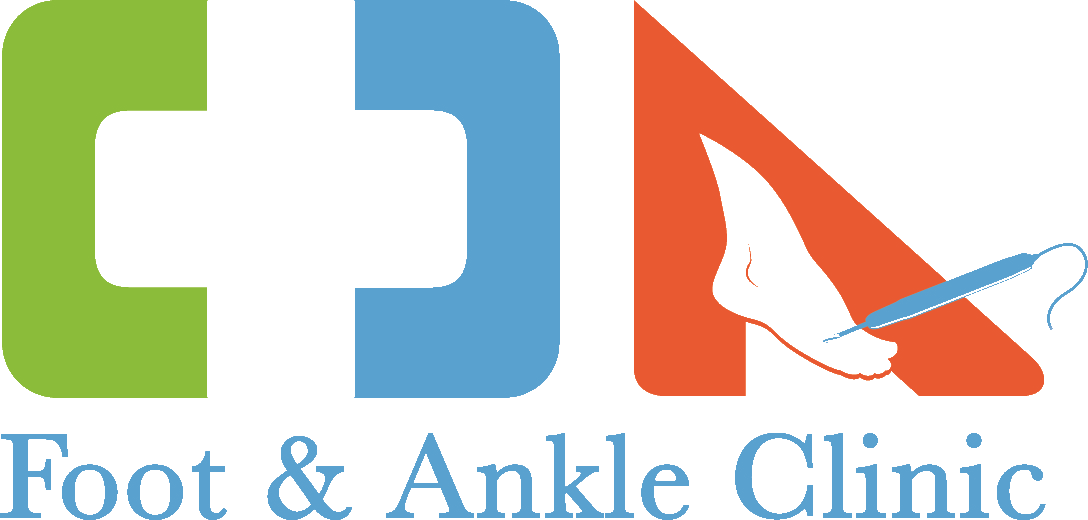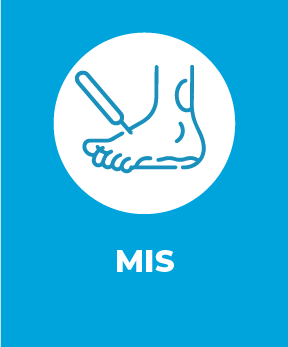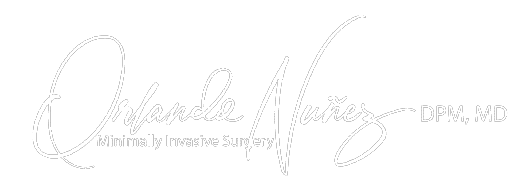Heel pain is most often caused by plantar fasciitis, a condition that is sometimes also called heel spur syndrome when a spur is present. Plantar fasciitis is an inflammation of the thick band of fibrous connective tissue (fascia) running along the bottom (plantar surface) of the foot, from the heel to the ball of the foot. This strong and tight tissue contributes to maintaining the arch of the foot. It is also one of the major transmitters of weight across the foot as you walk or run. Therefore, the stress placed on this tissue is tremendous. This condition is one of the most common complaints relating to the heel. The pain is usually felt on the underside of the heel and is often most intense with the first steps of the day, or first step after a long period of being off your feet.

Conservative treatments for bunions are often limited because they cannot correct the bone deformities. There is no way to stop the progression or reverse the deformity without moving the bones back into the correct position and realigning the joint. This can only be accomplished with surgery. So, when conservative treatment fails or the bunion progresses to the point where conservative treatment is no longer a viable option, surgical intervention may be needed to correct the deformity.
Dr. Nunez does a minimally invasive ambulatory surgical technique for plantar fasciitis. It involves making extremely small incision on the bottom of the heel for release of the fascia and removal of the spur if present. There is no need for a long open incision thus causing minimal injury to the adjacent tissues which results in reduced swelling, pain, and recovery time. MIS surgeons are able to rely on a compression dressing for stabilization immediately after surgery, eliminating the need for internal fixation (pins, screws plates, etc.) The most commonly performed MIS procedure for correction of heel spur syndrome is the Isham modified Schwartz procedure.
The small surgical incisions enable the surgeon to use fine specially designed instruments to obtain the best cosmetic result.
Surgery is performed under Fluoroscopic imaging and using just local anesthetic instead of general anesthesia, making foot surgery possible for some patients who were previously considered to be too at risk for traditional surgery due to age or medical history.
There is less trauma to the tissue and surgical times are lessened with this technique, reducing pain and recovery time. Less suturing is necessary and often times no sutures are used. Postoperative patients ambulate immediately and are placed temporarily in a surgical shoe or boot to aid ambulation.
Please call us at (208) 666-0605 or fill out the form below
to submit your information






